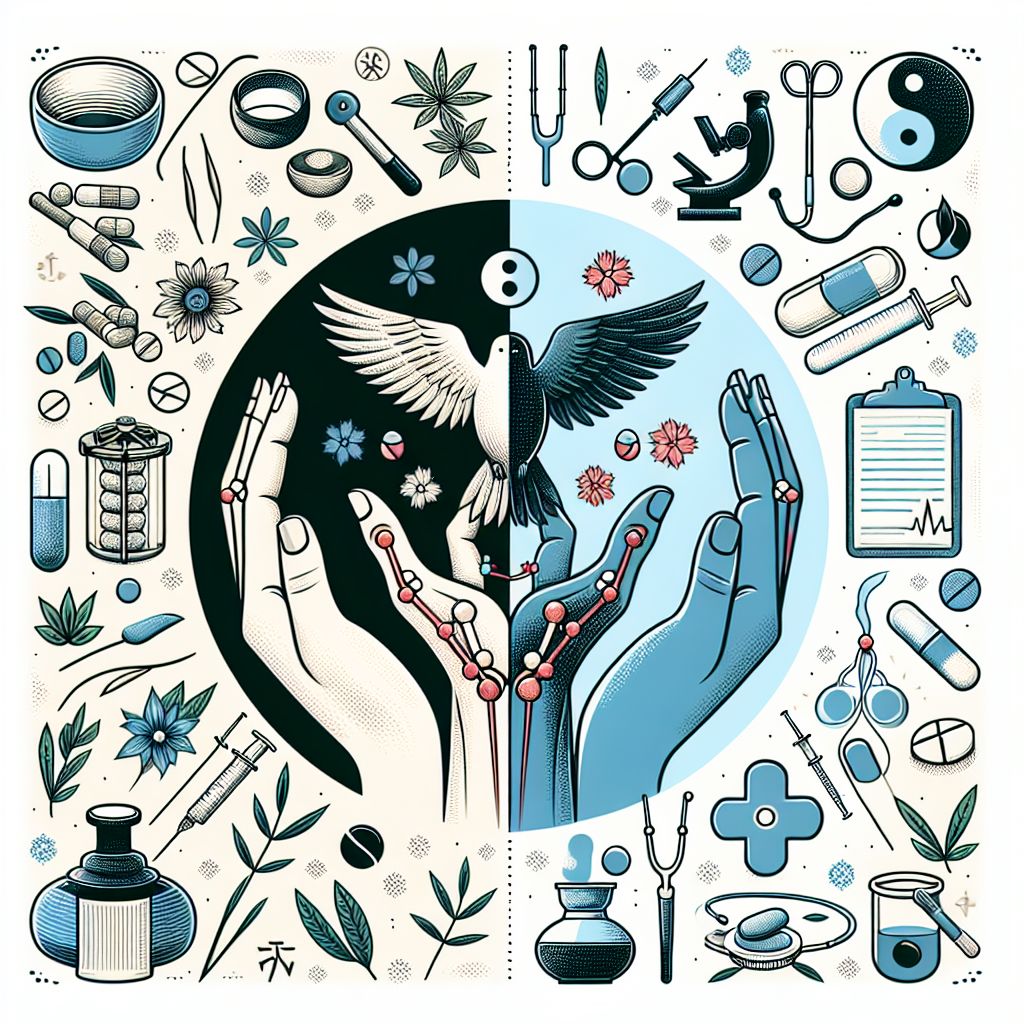The Power of Integrative Medicine: How Western and Eastern Practices Can Work Together to Combat Arthritis
Arthritis is a chronic condition characterized by inflammation and pain in the joints. Affecting millions of people worldwide, it significantly impairs quality of life and poses a substantial economic burden. The two most common types are osteoarthritis (OA), which involves the wear-and-tear of cartilage, and rheumatoid arthritis (RA), an autoimmune disorder. In recent years, integrative medicine, which combines Western medical practices with Eastern traditional therapies, has gained traction as a holistic approach to managing arthritis. This article explores the power of integrative medicine in combating arthritis, comparing and contrasting both Western and Eastern treatment methodologies.
Western Approaches to Arthritis Treatment
Diagnosis and Medication
Western medicine relies heavily on diagnostic tools such as X-rays, MRI scans, and blood tests to identify the severity and type of arthritis. Once diagnosed, the primary treatment modalities include pharmacological interventions and surgical procedures.
Pharmacological Interventions
1. Nonsteroidal Anti-Inflammatory Drugs (NSAIDs): Medications like ibuprofen and naproxen are often the first line of defense to reduce inflammation and relieve pain.
2. Corticosteroids: These are powerful anti-inflammatory drugs that can be administered orally or injected directly into the affected joints.
3. Disease-Modifying Antirheumatic Drugs (DMARDs): Used primarily for RA, DMARDs like methotrexate can slow the progression of the disease.
4. Biologics: These are advanced drugs designed to target specific pathways in the inflammatory process. Examples include TNF inhibitors like adalimumab and etanercept.
Surgical Interventions
When medications fail to provide adequate relief, surgical options such as joint replacement or arthroscopy may be considered. These procedures aim to repair or replace the damaged parts of the joint, thereby restoring function and alleviating pain.
Physical Therapy
Western medicine also emphasizes the role of physical therapy in maintaining joint function and mobility. Physical therapists devise customized exercise programs aimed at strengthening the muscles around the joints, thereby reducing the stress on them.
Eastern Approaches to Arthritis Treatment
Traditional Chinese Medicine (TCM)
Traditional Chinese Medicine (TCM) offers a different perspective on arthritis, focusing on restoring balance and harmony within the body. The primary modalities include acupuncture, herbal medicine, and Tai Chi.
Acupuncture
Acupuncture involves inserting thin needles into specific points on the body to stimulate the flow of Qi (energy). Numerous studies have shown that acupuncture can reduce pain and improve joint function in arthritis patients. The theory is that acupuncture helps to modulate the body’s pain pathways and reduce inflammation.
Herbal Medicine
TCM employs a variety of herbs to treat arthritis. Common ingredients include turmeric, ginger, and ginseng, which have anti-inflammatory properties. Herbal formulations are often customized to the individual’s specific condition and constitution.
Tai Chi
Tai Chi is a form of mind-body exercise that combines slow, controlled movements with deep breathing and meditation. Research has shown that practicing Tai Chi can improve balance, flexibility, and joint pain in arthritis sufferers.
Ayurveda
Ayurveda, an ancient Indian system of medicine, also offers various treatments for arthritis, focusing on balancing the body’s doshas (vital energies).
Dietary Adjustments
Ayurveda emphasizes the importance of diet in managing arthritis. Anti-inflammatory foods like turmeric and ginger are commonly recommended. Additionally, Ayurvedic practitioners may advise avoiding foods that are considered to increase inflammation, such as processed foods and red meat.
Panchakarma
Panchakarma is a detoxification procedure aimed at cleansing the body of toxins. Treatments may include massage, herbal oil applications, and steam baths. The goal is to purify the body and restore balance, thereby alleviating symptoms of arthritis.
Integrating Western and Eastern Practices
Integrative medicine combines the strengths of both Western and Eastern approaches to offer a more holistic and personalized treatment plan for arthritis.
Complementary Techniques
1. Combining Medications with Acupuncture: Patients can benefit from the immediate pain relief provided by NSAIDs or corticosteroids while receiving acupuncture treatments to promote long-term healing and balance.
2. Herbal Supplements and DMARDs: Herbal supplements like turmeric and ginger can be used alongside DMARDs to enhance their anti-inflammatory effects and reduce side effects.
3. Physical Therapy and Tai Chi: Incorporating Tai Chi into a physical therapy regimen can improve flexibility, balance, and overall well-being.
Patient-Centered Care
Integrative medicine emphasizes the importance of individualized treatment plans. Patients are encouraged to take an active role in their healthcare, making lifestyle changes that include exercise, diet modifications, and stress management techniques.
Scientific Validation
One of the key challenges in integrating Eastern and Western practices is the need for scientific validation. Increasingly, clinical trials are being conducted to evaluate the efficacy of traditional therapies like acupuncture and herbal medicine. This growing body of evidence helps to bridge the gap between the two medical paradigms, making it easier for healthcare providers to offer integrated treatment plans.
Conclusion
Arthritis is a debilitating condition that requires a multifaceted approach for effective management. While Western medicine offers powerful diagnostic tools and pharmacological treatments, Eastern practices like TCM and Ayurveda provide holistic, patient-centered care. Integrative medicine harnesses the strengths of both paradigms, offering a comprehensive approach to combating arthritis. By combining the immediate relief of Western pharmacology with the long-term benefits of Eastern therapies, patients can achieve better pain management, improved joint function, and enhanced overall well-being. The future of arthritis treatment may well lie in this integrative approach, providing a balanced, effective, and personalized path to health.

